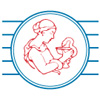

Setting Priorities for AIDS Prevention Among Adolescents
MONTREAL - In over ten years of HIV infection in this country, very few adolescents from 12 to 18 years old have been identified as seropositive. This may be due to the infrequency of high risk behaviours among youth. Few adolescents are involved in prostitution, intravenous drug use or homosexual activities. For those who are involved, these behaviours are often sporadic. Thus, irregular and less frequent exposure of these "beginners" limits the risk of HIV during adolescence. This situation provides an opportunity for HIV prevention and shows the importance of adopting our actions to the special circumstances of adolescents. It is essential to recognize different adolescent groups in order to assess the present and future risks they incur with regard to contracting HIV, and to offer effective interventions.
Majority
At the outset, the majority of adolescents most likely will not be affected by HIV infection. These adolescents live in fairly stable environments and rarely engage in risky behaviours. They are sexually active with one partner or a few successive partners. Adequate and regular condom use is more and more common. For them, improving and maintaining preventive behaviours are the goal.
Secondly, some adolescents have family and social difficulties. Sexual activities among these youth are more precocious, the number of partners greater, and drug use is more widespread. Condom use is less frequent among this group. Still, these adolescents are mostly untouched by HfV infection, but there is a potential danger for them. A study of HIV infection among 2,859 adolescents in custodial facilities and /or juvenile court in Montreal revealed a rate of 0,03% seropositivity [Frappier JY, Roy E et al. L'infection au VIH chez les adolescents en difftculté de la région montréalaise. Rapport de recherches, PNRDS, Santé Canada, 1995].
A particularly vulnerable subgroup of this group has been identified. A small number of adolescents facing serious social difficulties adopt dangerous behaviours, such as prostitution and injection drug use. Use of condoms or clean needles is often irregular. HIV positive adolescents are mainly from this group, and they make up an ever growing pool for the dissemination of the infection. In the Montreal study, 0.6% of adolescent injection drug users were HIV infected. However, they made up only 5% of the study population. In the Toronto street youth study, 0.8% of youth aged 20 years or less were found to be HIV positive [Read S, De Matteo D, Bock B, Coates R, Goldberg E, Kng S, Major C, et al. HlV prevalence in street youths in Toronto. Research Report, Health and Welfare Canada, 1993 ]. They were all boys, either injection drug users or engaged in unprotected homosexual activities.
Thirdly, boys engaging in homosexual activities are not very visible and are often ostracized. Some of these teenagers are especially vulnerable due to their isolation and likelihood of violence that could lead to alcohol and drug abuse, sexual promiscuity and prostitution.
These last two groups should be the target of concerted and immediate actions regarding drug use and safer sex practices, among other issues.
Finally, there are two other groups at high risk for HIV infection: adolescent hemophiliacs and adolescents born in countries where HIV is endemic.
Myths and a lack of specific knowledge still constitute barriers to HIV testing: ignorance or misconceptions about the concepts of seropositivity, AIDS, latency period and the risk of various sexual practices. For many adolescents, a negative result on an HIV test will confirm their sense of invulnerability.
Counselling is an important step in testing for HIV. Adolescents with social problems often refuse counselling when asking for an HIV test, but agree to it after receiving their results.
In our experience, HIV positive adolescents have major family and social problems. When we reveal the results of their tests, they remain calm. Even if they ask for confidentiality, they announce the test results to significant others. Rarely do they commit desperate acts following the test results.
Effective and concerted interventions in terms of HIV prevention and support services must respect the diversity among adolescents. Approaches must take into account stages of development heterogeneity and all factors that influence adolescents' lifestyles.
by Doctors Jean-Yves Frappier, Sectin de médecine de l'adolescence, Hôpital Ste-Justine; Élise Roy, Centre for AIDS Studies, Montreal Public Health Directorate, Infectious Diseases; Louise Charbonneau, Clinique des Jeunes St-Denis, CLSC Centre Ville; Marc Girard, Section de médecine de l'adolescence, Hôpital Ste-Justine
| This article first appeared in Canadian Aids News, Volume VIII Number 2, published by the Canadian Public Health Association, September 1996. |  | Posted by the Canadian Public Health Association, September 1996. |
 |  |  |